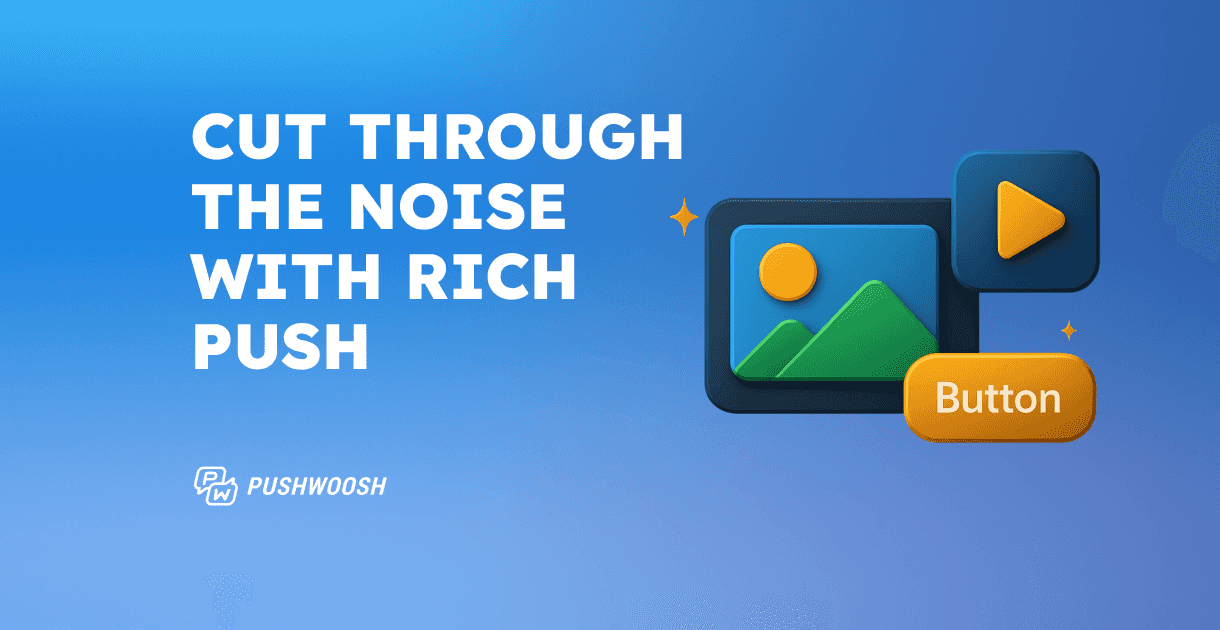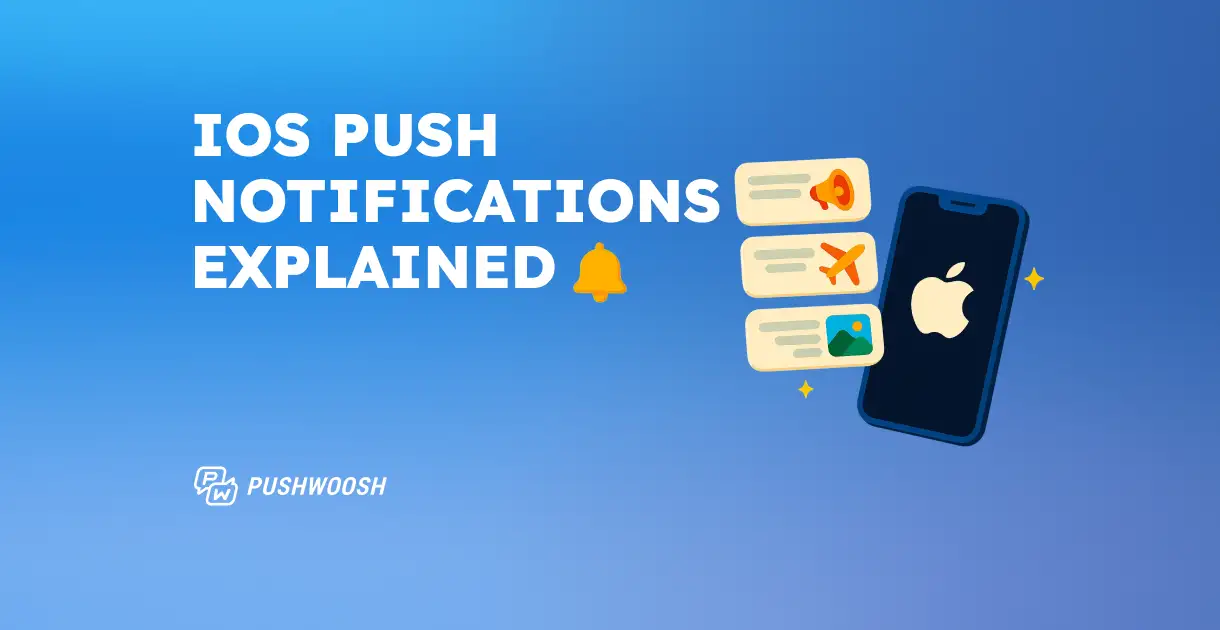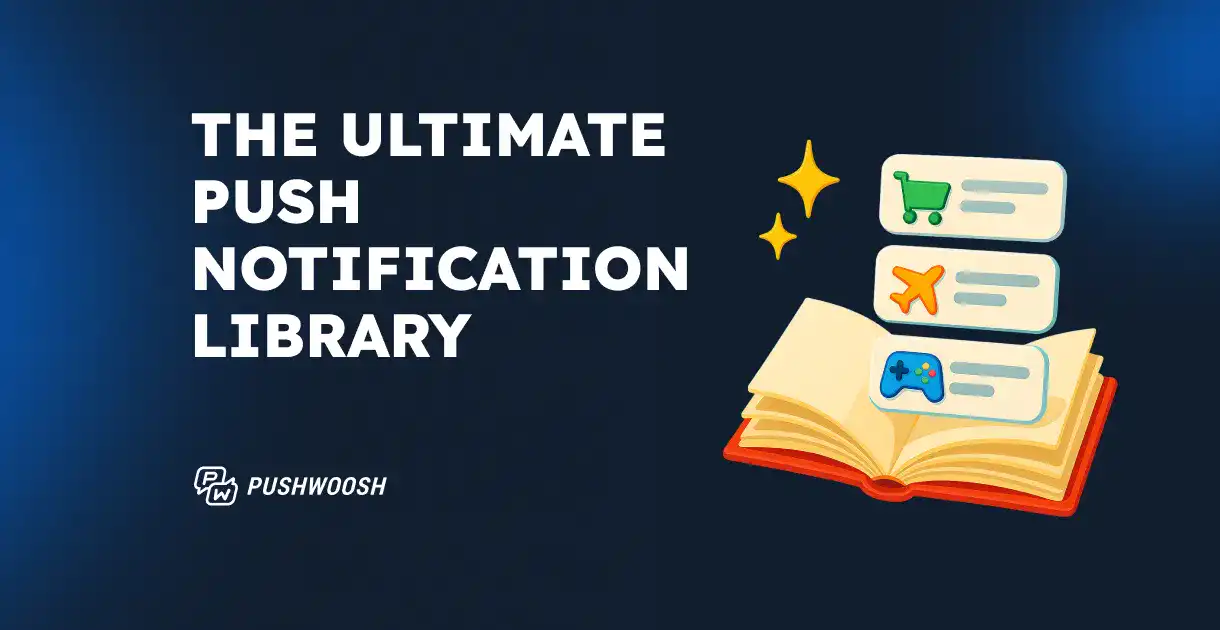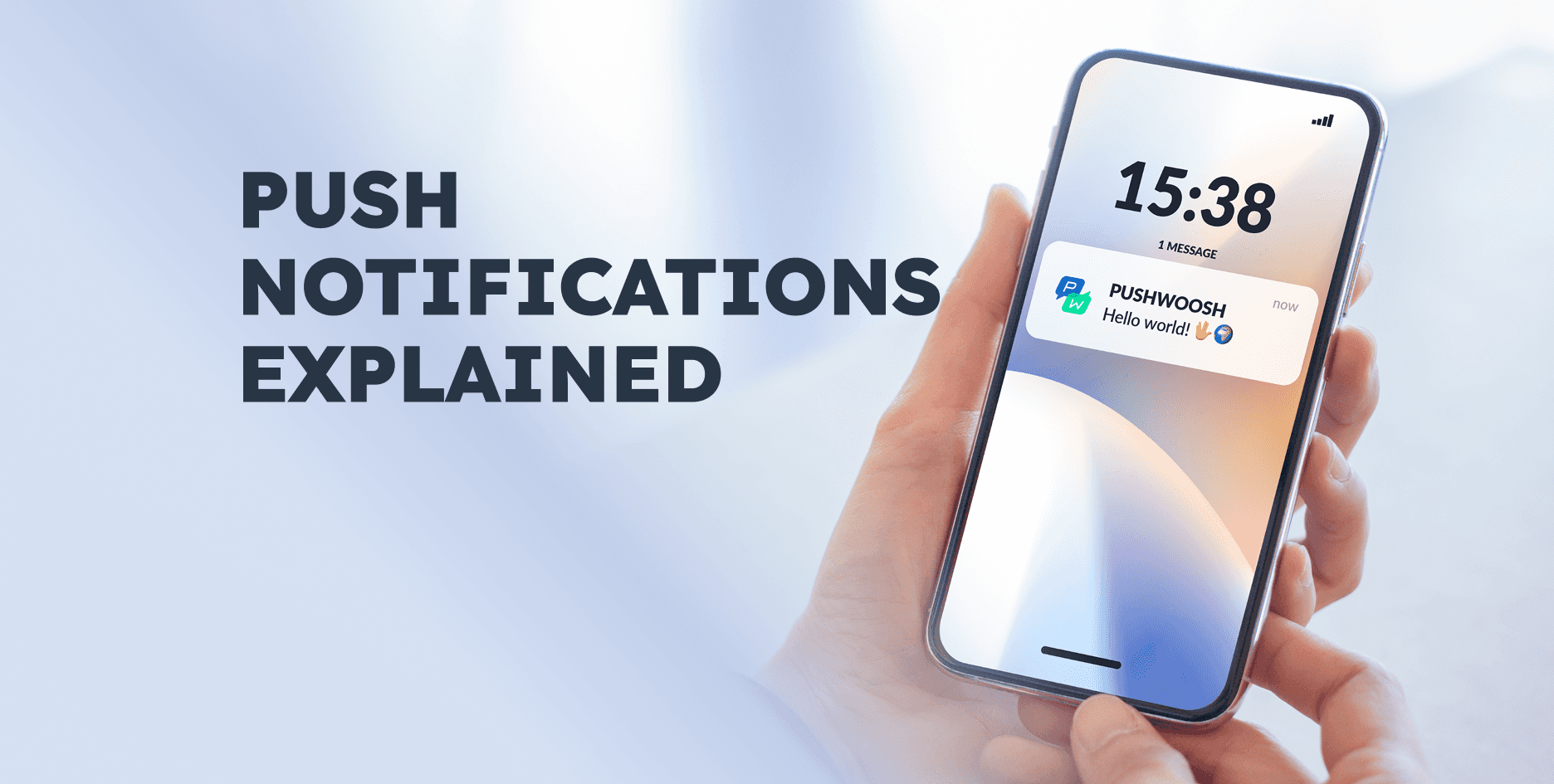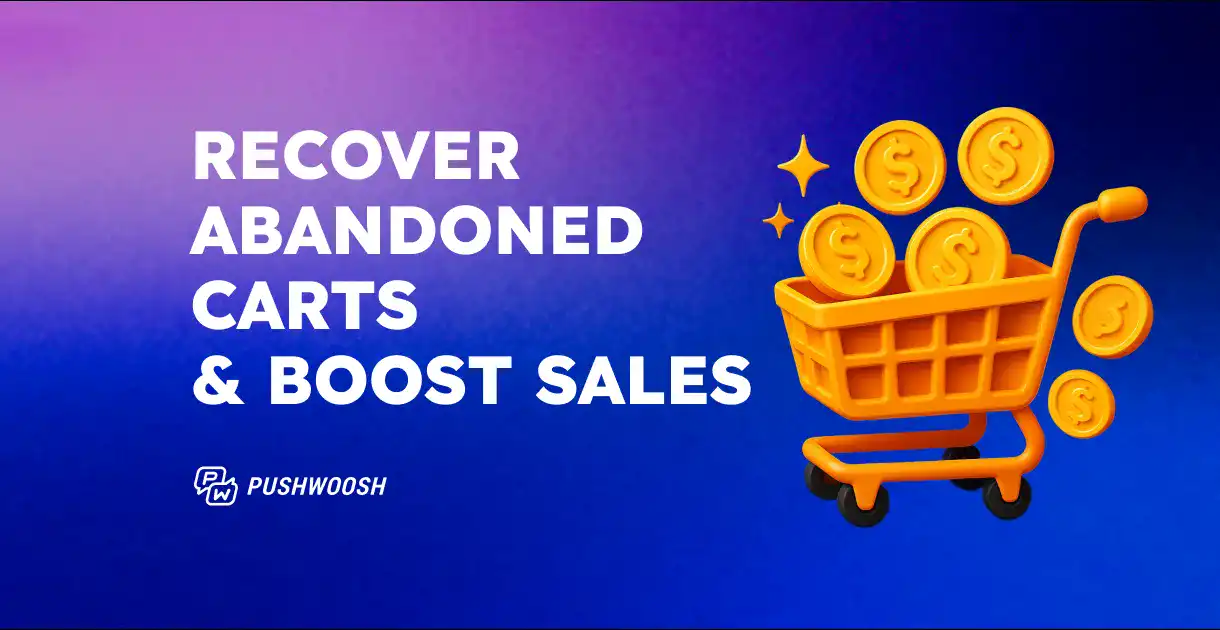How to increase conversions with rich push notifications (real-world examples & tips)
Ever notice how most push notifications disappear into the background noise? With users bombarded by dozens of alerts daily, plain text notifications often fail to spark action. This is where rich push notifications come in, transforming a simple message into an interactive experience that becomes irresistible to click.
P.S. With Pushwoosh, creating rich media push notifications is quick and effortless (no coding required). In this post, you’ll learn how to implement rich push notifications and see how leading brands use them to boost engagement and revenue.
What are rich push notifications?
A rich push notification is a push message enhanced with rich media elements — images, GIFs, videos, or interactive elements — that transform a standard alert into a visually engaging experience on the lock screen.
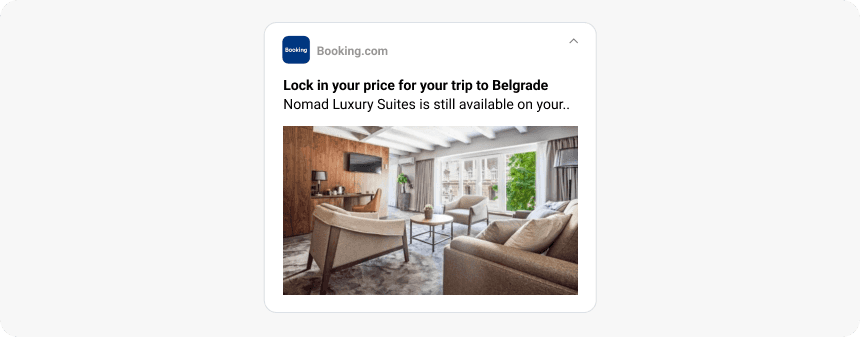
While a standard push notification is a text-only message, a rich push adds rich content to provide a more engaging and contextual experience, transforming a simple message into an interactive one.
Why use rich push notifications?
Rich push notifications aren’t just prettier messages — they perform better. According to data, rich push notifications achieve a CTR of 9.2%, compared to 6.9% for plain text pushes.
Here’s how they stand out and drive engagement:
Stand out visually: In a crowded notification tray, eye-catching images, GIFs, or videos make your message impossible to ignore.
Appeal to different processing styles: Not everyone processes text-first. Many users need visual reinforcement to fully engage, and rich push notifications provide that.
Drive higher conversions: Rich push notifications make it easy to take action — claim a limited-time offer, sign up for an event, share news — directly from the screen.
Types of rich push notifications
Rich push notifications come in many formats, each suited for different goals and user behaviors.
Images
Static visuals that add context — from product photos and promo banners to news graphics.
Best for: e-commerce stores showcasing new products, food delivery apps tempting users with pictures of meals, or media outlets adding a powerful image to a news headline.
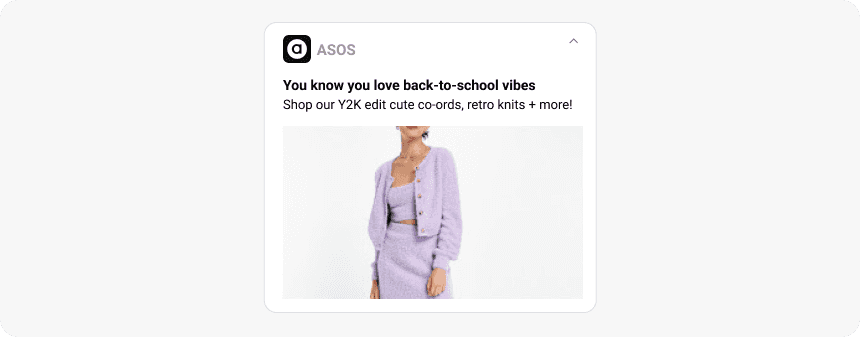
GIFs & videos
Dynamic content that grabs attention. Show a product in action, create urgency for a limited-time offer, or send video clips as previews or tutorials.
Best for: streaming services sending movie trailers, gaming apps previewing new content, sports apps delivering highlights.
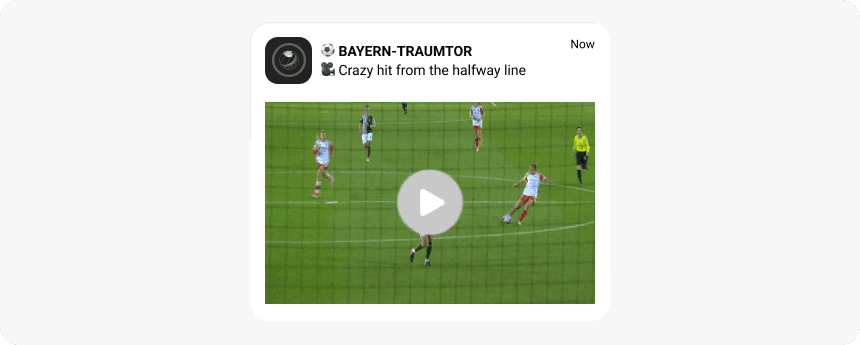
⚠️ Pro tip: On Android, GIFs display as a static image (first frame only).
Interactive buttons
Clickable CTAs that let users act without opening the app.
Best for: driving instant conversions with actions like Shop now, Book now, or Reschedule.

Geo-based notifications
Geographically personalized notifications that combine visuals like maps with text, triggered either by a user’s location change or by real-time dynamic updates.
Best for: ride-sharing or delivery apps showing real-time progress on a map, giving users critical updates at a glance.

How do rich push notifications work? (and best practices to maximize conversions)
At their core, rich push notifications work much like standard pushes:
Choose a target audience → create a message (+ attach rich media) → schedule delivery through a push service → the notification is displayed on the user’s device.
The difference lies in the details, and getting them right can dramatically increase engagement. Let’s dive into rich push best practices for higher conversions.
#1. Keep in mind technical requirements
The capabilities of Apple rich push notifications and Android rich push notifications differ:
| iOS (APNs) | Android (FCM) |
|---|---|
| Supported on iOS 10+ | Fewer restrictions than iOS |
| Allows different file types: images, videos, GIFs, and interactive elements | Supports images, videos, and interactive buttons (limitation: GIFs display only as static images) |
| Requires a notification service extension to process and display rich content | Fewer restrictions, simpler setup |
| Apple enforces strict design & privacy guidelines | Easier implementation overall |
⚠️ Pro tip: Sometimes rich media notifications fail to display. The most frequent causes include: missing iOS integration, unreliable servers, broken image links (e.g., those requiring JS rendering), or unsupported file types like TIFF or HEIF. Keep media in standard formats (JPEG, PNG, MP4, GIF) and host it on reliable servers to ensure users receive notifications smoothly.
#2. Limit the size and length
Rich content should enhance your notification, not slow it down. Oversized images or videos can delay delivery or fail to render properly on certain devices.
A good practice is to keep images under 100-200 KB and videos or GIFs under 1 MB. Always test your notification on multiple devices — from high-end smartphones to older models — and under different network conditions (Wi-Fi vs. mobile data).
This ensures your message looks sharp, loads quickly, and reaches your audience without friction.
#3. Use deep links
Adding deep links is one of the simplest and most effective ways to increase conversions. Instead of sending users to your app’s home screen, deep linking takes them directly to the page or feature most relevant to the message — a flash sale, a product they have viewed, or new content.
This seamless experience minimizes friction, boosts engagement, and leads to higher conversions. For example, a rich push announcing “Flash sale!” can link directly to the sale section of your app, dramatically improving purchase rates.
#4. Test & optimize your formats
Not every audience responds to the same type of media. The only way to know what works best is through A/B testing. Compare different media types (images vs. videos vs. GIFs), experiment with CTA placement and wording, and even pit rich pushes against standard ones.
#5. Automate, segment & personalize
Simply sending rich push notifications isn’t enough — their success depends on timing and relevance. Use behavior-based segmentation to target the right users, personalize the content to reflect their actions or preferences, and automate delivery around key events.
Wonder how rich push notifications are used in practice? Let’s explore how leading brands use these strategies with Pushwoosh to achieve remarkable results.
Real-world examples of rich push notifications in action
HungryNaki: Boosting orders & average order value
As a pioneering food delivery app in Bangladesh, HugryNaki wanted to sustain its pandemic growth.
Strategy: The team segmented users by their behavior (e.g., “0 orders in the last 7 days” or “viewed X cuisine”) and sent personalized rich push notifications with enticing images of dishes.
Paired with event-triggered automation, these campaigns nudged customers to try new restaurants and cuisines.
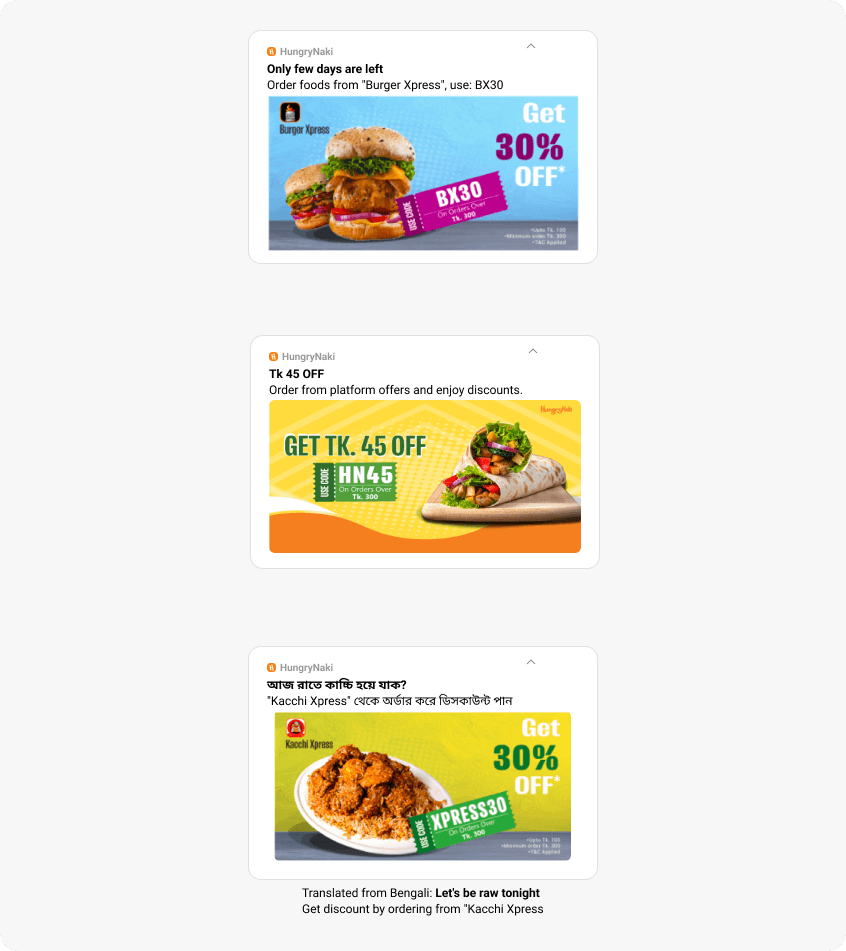
Results: This well-targeted strategy led to an increase in purchases and improved monetary metrics. HungryNaki saw a noticeable boost in its AOV and a rise in the number of orders.
Bladestorm: Driving engagement & revenue in gaming
Bladestorm, a developer of the GC.SKINS app, needed a scalable way to monetize traffic and retain users.
Strategy: The company implemented automated, recurring campaigns with rich pushes to deliver weekly offers to its entire user base.
Every weekday, gamers received a new bonus, and each rich push notification contained referral buttons, so users could easily share codes with friends.

Results: Within eight months, Bladestorm saw a surge in referral conversions, contributing to an impressive 16.62% growth in MAU.
SPORT1: Maximizing traffic to a media app
As a leading sports platform with an in-app advertising monetization model, SPORT1’s primary goal was to maximize traffic and the time users spend in the app.
Strategy: SPORT1 used rich media for editorial updates, news, and in-app feature promotions.
For time-sensitive updates, they used the Pushwoosh API to send transactional notifications for live tickers, such as goals and red cards.
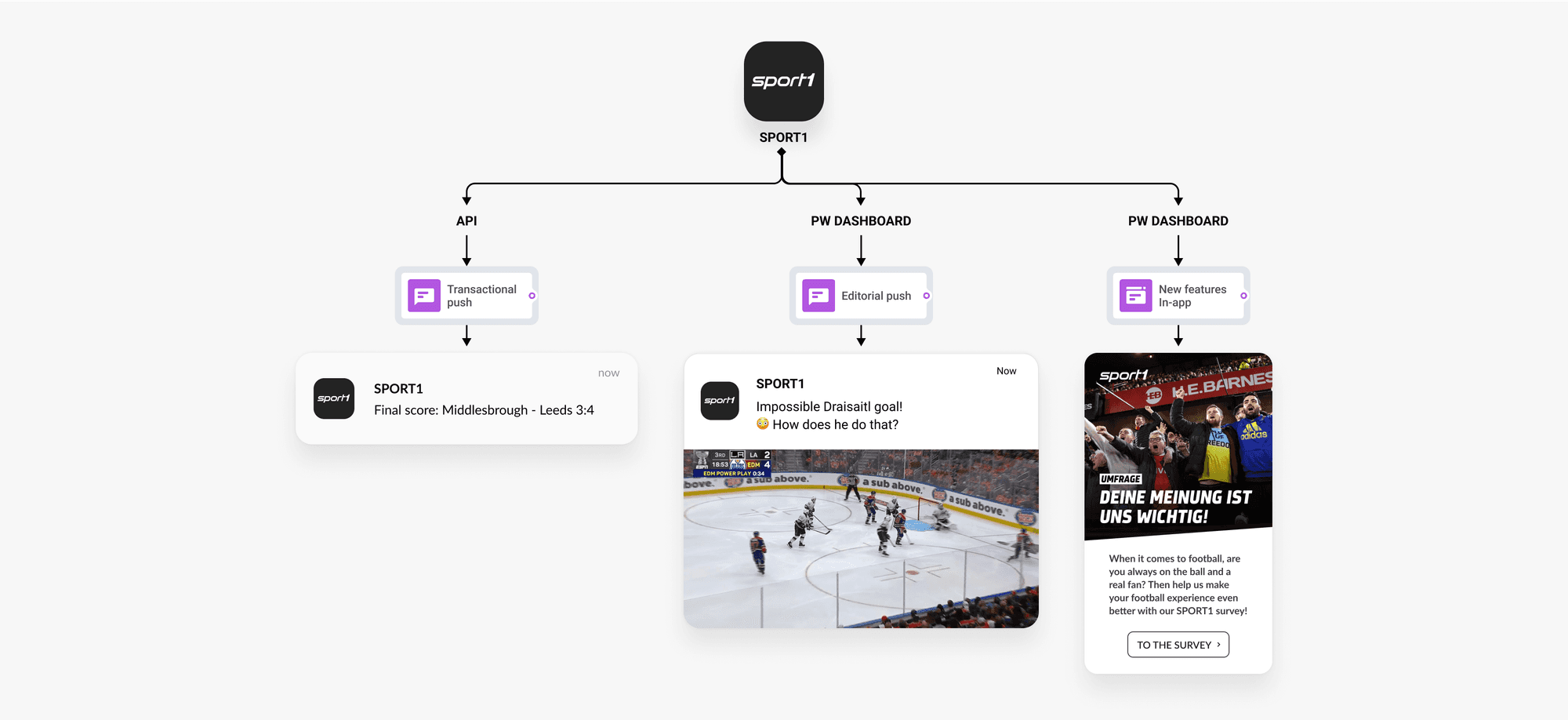
Results: This cross-channel engagement strategy resulted in 5 million app opens per month, fueling their ad-based monetization model. Push open rates increased up to 8%, which is 2-3x higher than the industry benchmark for news apps.
Boost conversions with rich push notifications
Rich push notifications don’t just stand out visually — they drive higher engagement, smoother user journeys, and stronger conversions.
With Pushwoosh, you can design, automate, and analyze rich pushes — complete with images, GIFs, video, deep links, and advanced personalization — all in one platform.

